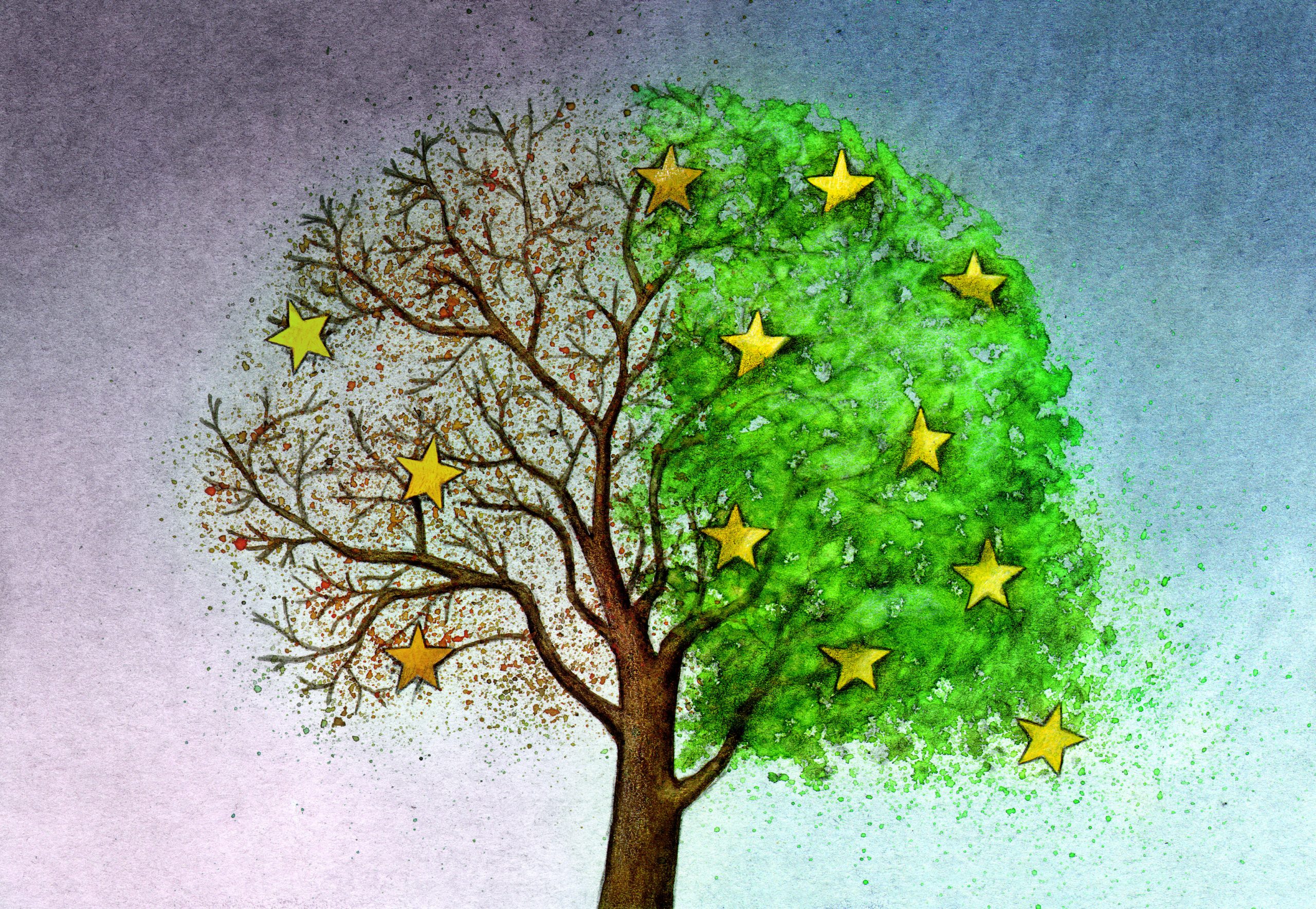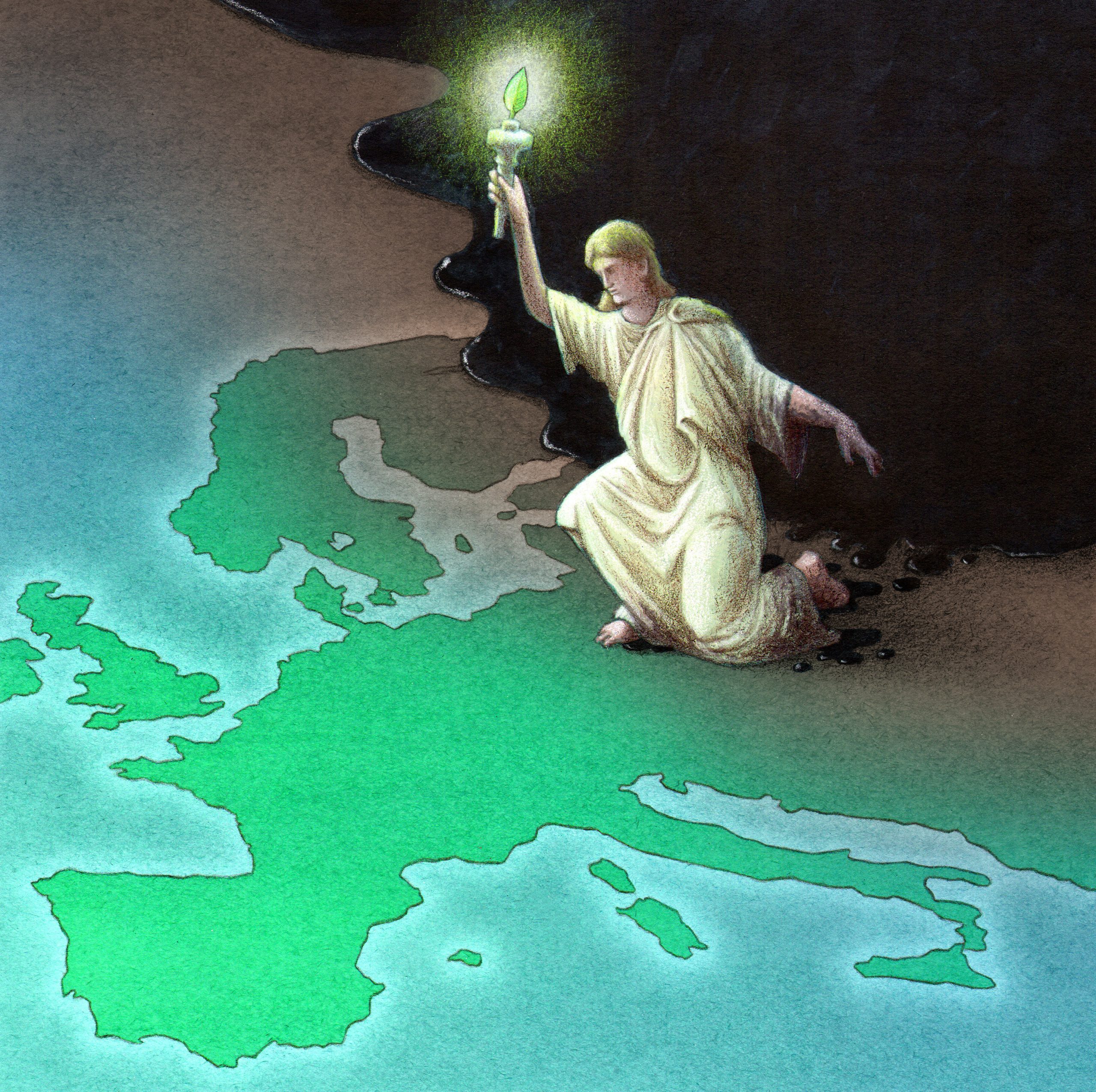
13 September 2022
The evolution of the European Union since its inception as a peace project is best characterised by a series of ongoing strategic shifts. Rather than subscribing to a distinct grand design of European integration, it is the shockwaves emanating from decade-long regional and global crises that have stimulated a more autonomous Europe.
Although the policy discourse on strategic autonomy has been fixated on aspects of security and defence, these broader shifts and institutional alignments have proven to be of significance en route to reducing external dependencies in areas of strategic interest. Their trajectory in turn will largely determine the budget priorities, drivers of macroeconomic policy, and the role played by EU institutions.
ENERGY PACKAGE: A total of five energy legislative packages have been adopted since 1996, with the first two focusing on liberalising national gas and electricity markets. The ratification of the Lisbon Treaty more than a decade later officially granted Brussels the competence to coordinate a bloc-wide energy policy. This occurred against a backdrop of increasingly assertive behaviour from Europe’s largest single gas supplier, Russia, as it proceeded to invade Georgia in 2008 before temporarily halting gas supplies to its other neighbour, Ukraine, a year later.
The Third Energy Package, passed in the Spring of 2009, served as an inflection point for the securitisation of energy in the EU. The new gas model required the ‘unbundling’ of transmission assets (i.e., pipelines) in order to promote competition but also weaken the natural monopoly of gas sellers that happened to be owners of distribution networks – most notably Russia’s energy giant Gazprom.
BREXIT NEGOTIATIONS: The UK’s departure became a watershed moment for the bloc’s history but did not live up to the fears of subsequent political and economic disintegration — conversely, public support for membership across the EU rose by 9 per cent over the course of Brexit negotiations. In response to the unprecedented challenge to the Union’s raison d’etre, the EU-27 have expressed unity and resolve of a maturing strategic polity as opposed to the usual intergovernmental horse-trading seen in the previous waves of crises that were stained with divisions.
VACCINE RESPONSE: The EU negotiating supply contracts on behalf of member states and working to ramp up domestic manufacturing capacity was a step forward in terms of strategic autonomy that stood in contrast to European neighbours accusing each other of hoarding critical PPE supplies at the start of the pandemic.
By the end of 2021, the EU managed to reach its 70 per cent target for fully vaccinated adults, boost its manufacturing output to 300 million vaccine doses per month and become the only regional bloc to donate over half of its vaccine production overseas.
NEXT GENERATION FUND: The EU’s transition from a ‘transfer union’ to a ‘borrowing union’. The NextGenerationEU is the largest fiscal stimulus package in the history of Europe, issuing 800 billion euros worth of grants and loans by 2026.
Before the borrowing milestone, Brussels was a relatively small player in the bond market with low borrowing needs and limited interaction with financial markets. The conclusion of the recovery plans in May 2020 has raised hopes not only for the future development of EU capital markets and greater international role for the euro but also served to counter the narratives of the failing eurozone project. It also allowed for greater flexibility to respond to ad hoc crises.
ENLARGEMENT POLICY: Intensification of EU accession has become the fundamental response to Russia’s full-scale invasion: on 23 June the European Council voted on the historic decision to grant candidate status to Ukraine and Moldova while presenting Georgia with a membership perspective. The motivation behind the decision to apply varies; meanwhile, all parties of the Association Trio regard EU membership as a source of regional stability and territorial integrity in the face of Russian aggression. Less than a month later, the EU officially launched accession negotiations with Albania and North Macedonia after over a decade of waiting.
STRATEGIC COMPASS: The sixth and final draft of the Strategic Compass, similar to NATO’s Strategic Concept adopted at the 2022 Madrid Summit, delegates a higher degree of priority towards the dragon-bear alliance – with Russia being mentioned 25 times in the context of a direct threat to European security and China described as a challenge a total of 9 times. Whether the tougher language of the Compass will materialise as a genuine strategic shift in the EU depends on future decisions and the development of modern military capabilities.
EUROPEAN PEACE FACILITY: In March 2021, the EU consolidated the financing for its Common Foreign and Security Policy (CFSP) missions and support for external partners under a single mechanism of the European Peace Facility (EFP). Until July 2022, the EU has issued a total of 2.5 billion euros in military aid to the Ukrainian Armed Forces since Russia’s full-scale invasion in February – almost half of the total funds available under the off-budget mechanism until 2027. While the EU has previously provided defence-related assistance bilaterally or through regional and international organisations to other countries, its commitment to Ukraine set a historic precedent of the bloc’s first-ever provision of lethal equipment to a third country.
RUSSIAN SANCTIONS: In the span of five months following Russia’s full-scale invasion of Ukraine, the EU has agreed on seven packages of sanctions targeting different strategic sectors of the Russian and Belarusian economies. For the first time, the sanctions were applied against state-owned media outlets operating in the EU – barring access to five broadcasters recognised as tools of disinformation warfare.
The war in Ukraine has exposed loopholes left in the EU’s previous sanction regime, permitting ten EU countries to export a total of 346 million euros worth of arms to Russia between 2015 and 2020. In May, introducing liability for sanction violations as a serious crime at the EU level was first proposed. Breaking Russia sanctions is currently a criminal offense in just twelve countries.
While the record-breaking speed with which the legislation was adopted went against the commonly held belief that ‘club of 27’ is too broad for timely decisions, limitations to export and import restrictions highlight Europe’s critical dependencies on Russian fossil fuels.
Back to Main Report Page
Executive Summary
Four Scenarios
About the Project

The following report projects four different scenarios which map out how European democratic security will be challenged by 2030 and how to prepare for it.
Download report